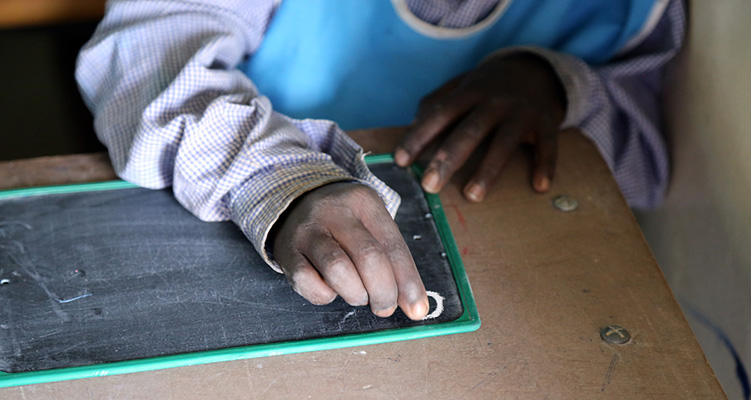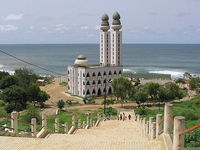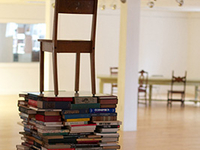Strategic Adjustments in Franco-Arab Education in Senegal

October 25, 2019
With the introduction of Islam, an increasing number of households across Senegal have become familiar with the Arabic language. Indeed, Arabic is of paramount importance to the population, of which 95% is Muslim. The Arabic language appears to be highly valued among Senegalese Muslims because it is also the language through which the Koran was revealed. In fact, a person with in-depth knowledge of the Koran is considered educated and a good Muslim. However, from the outset colonization imposed an education system based on the teaching of French.
Coexistence between the two education systems has proved very difficult. To meet the needs of a large part of the population, private and public Franco-Arab schools offer a dual education in both French and Arabic. Islam is actually an integral part of the lives of Senegalese people as it transcends ethnic and regional particularities and structures the lives of the people in an open way, regardless of their social origin, level of education, and cultural or geographical background.
Based on a review of the literature, this article illustrates how the peoples of Senegal have been able to use Franco-Arab education as an opportunity to avoid the pitfalls of colonial administration.
Learning models in Franco-Arab schools
At least two categories of Franco-Arab schools can be identified: those characterized by the strong dominance of the Islamic curriculum (Koran, fiqh, Sunnah, etc.), and those characterized by a greater or lesser balance between French and Arab-Islamic education. Today, owners of Franco-Arab schools are deeply invested in preschool and elementary education.
In the first category of Franco-Arab schools, education during the first two years of primary school is focused on acquiring literacy in Arabic and learning the Koran and hadiths. French classes are limited to an introduction to the alphabet and to developing communication skills. During those two years, students are expected to memorize as many surahs as possible from the Koran. But from the third year onwards, they are expected to “catch up” with first, second, and third year curriculums. In their sixth and last year of primary education, learners are required to take their exams in French and in Arabic to obtain their basic school-leaving qualification in both languages (national curriculum and certificate of completion of the Arab-Islamic curriculum).
The second category of Franco-Arab schools strikes a balance between secular public education and Arab-Muslim education. The creation of Al Falaq and Jama’atou Ibadou Rahmane (JIR) movements has made a significant contribution to the promotion of Franco-Arab education, an area almost completely neglected by the state, which had chosen French as its official language.
This option to combine or at least balance Arab-Islamic education and secular public education was mainly aimed at creating and/or training future citizens with deeply rooted (Islamic) religious values but also with the capacity to achieve everything that a public school learner should know. The Bilal Koranic school[1], created by the JIR movement, for example, had opted for this system. But apart from this school, which only offers elementary education, the JIR had created a secondary school, which even if it was meant to receive graduates from the Bilal school, did not meet with the approval of parents who wanted their children to proceed with the curriculum of secular public education. In JIR schools, there are two teachers per class for all subjects, that is, a French-speaking teacher and an Arabic-speaking teacher. In addition, the JIR assists many institutions with teacher training and programmatic studies. Indeed, at the El Hadji Omar Tall school, the Arab-Islamic curriculum largely overtook the secular public education curriculum. Though some parents favor Arab-Islamic education, following this path was in many respects a form of exclusion of the pupils. Still it should be pointed out that since the École Normale Supérieure (renamed FASTEF[2]) provides training for graduates in Arabic, there is no longer a distinction between teachers of Arabic and other teachers: all receive the same salary (Thierno Ka, Alioune Diop and Djim Dramé, 2013).
Franco-Arab schools: claiming a double identity
While the claim to cultural citizenship (or new forms of citizenship) was initially put forward by the so-called “counter-elite” made up of educated Arabic speakers, it is now increasingly appropriated by a new francophone Muslim elite trained in secular institutions (Camara, 2016). This dual identity allows its members to escape from positions of “second-class citizenship” and claim their belonging to national citizenship. Their claim, although critical vis-à-vis the state and its secular institutions, is not expressed outside the existing institutional framework and state control. To the contrary, in the expression of their civil and political rights, these Muslim citizens tend to adopt the rules of the democratic game to promote their project of an “Islamic society” and challenge the hegemony of the Westernized and secular elites who have ruled Senegal since its independence.
Conclusion
Franco-Arab schools are now well established in Senegal, particularly in urban centers. Graduates from Arab-Islamic schools, who therefore call themselves “Arabists” (arabisants), have long suffered from a lack of career opportunities. Today the good scores obtained by Franco-Arab schools in national examinations (BFEM, baccalaureate) have eventually led Senegalese public opinion and the state to view them as a real asset for the country. These actors, most of them active in the Senegalese islamic movement, have been able to requalify the Western perspective by using Franco-Arab schools as a key instrument for an assumed identity.
[1] Some former students from this school are today high-level public officials while others are secondary education and higher-education teachers.
[2] Faculté des Sciences et Technologies de l’Éducation et de la Formation.
El Hadji Malick Sy Camara, Cheikh Anta Diop University of Dakar, Senegal <asmalick20031@gmail.com>


















